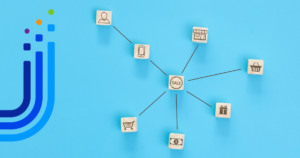Efficient customer lifecycle management is crucial for any business’s success. The customer lifecycle refers to the process a customer goes through from becoming a prospect to transforming into a loyal customer.
To make the most of each stage of this cycle and maximize sales, well-planned sales strategies backed by Business Intelligence (BI) are fundamental.
In this article, we will explore how BI can assist you in tracking and leveraging the different stages of the customer lifecycle.
The First 3 Stages of the Customer Lifecycle
The first stage of the customer lifecycle is attracting prospects.
At this phase, your goal is to capture the attention of people who might be interested in your products or services. BI can play a crucial role in this stage by providing valuable insights into your target audience and helping direct your marketing efforts effectively.
1. Prospect Attraction
How BI helps: BI allows you to analyze demographic data, online behavior, and consumer preferences to precisely identify your target audience. You can use this information to personalize your marketing strategies and reach the right people at the right time.
2. Prospect to Customer Conversion
Once you’ve attracted prospects, the next step is to convert them into customers. This involves persuading them to make a purchase or acquire your services.
BI can help you better understand prospect behavior and adjust your sales strategies accordingly.
How BI helps: BI provides data on how prospects interact with your website, emails, and other marketing channels. You can use this information to identify obstacles to conversion and make data-driven improvements.
3. Retention Nurturing
After acquiring customers, it’s important to maintain a strong relationship with them and foster retention. Loyal customers are more likely to make repeat purchases and become brand advocates.
BI helps you understand the needs and preferences of your customers to keep them engaged.
How BI helps: BI can track your customers’ buying behavior over time and provide insights into which products or services are most popular among them. This allows you to personalize your offerings and keep customers engaged with your brand.
It’s not just about acquiring and retaining customers, you need to activate them.
4. Reactivating Inactive Customers
Inevitably, some customers may become inactive. BI enables you to identify these customers and develop strategies to reactivate them. This could include special offers, discounts, or other initiatives designed to regain their interest.
How BI helps: BI can analyze historical customer data to identify patterns indicating when and why customers become inactive. This provides valuable insights for designing effective customer reactivation strategies.
5. Increasing Sales to Loyal Customers
Loyal customers are a significant revenue source for your business. BI helps you identify opportunities to increase sales to this group of customers, whether through cross-selling, upselling, or exclusive offers.
How BI helps: BI can analyze purchase patterns of your loyal customers and identify complementary products or services you can offer them. It can also provide insights into the right timing to present these offers.
Continuous Tracking and Evaluation
Continuous tracking and evaluation are essential to ensure your customer lifecycle-based sales strategies are effective. BI allows you to constantly monitor and measure the performance of your strategies and make adjustments as needed.
How BI helps: BI provides real-time reports and data analysis, enabling you to assess the impact of your sales strategies at each stage of the customer lifecycle. This helps you make data-driven decisions and continuously optimize your sales efforts.
Conclusion
Customer lifecycle-based sales management is an effective strategy to maximize sales and foster customer loyalty. Business Intelligence plays a crucial role by providing valuable data that helps you better understand your audience, adjust your sales strategies, and keep customers engaged over time.
By harnessing the power of BI in your sales management approach, you’ll be better equipped to build strong customer relationships and achieve long-term success.







